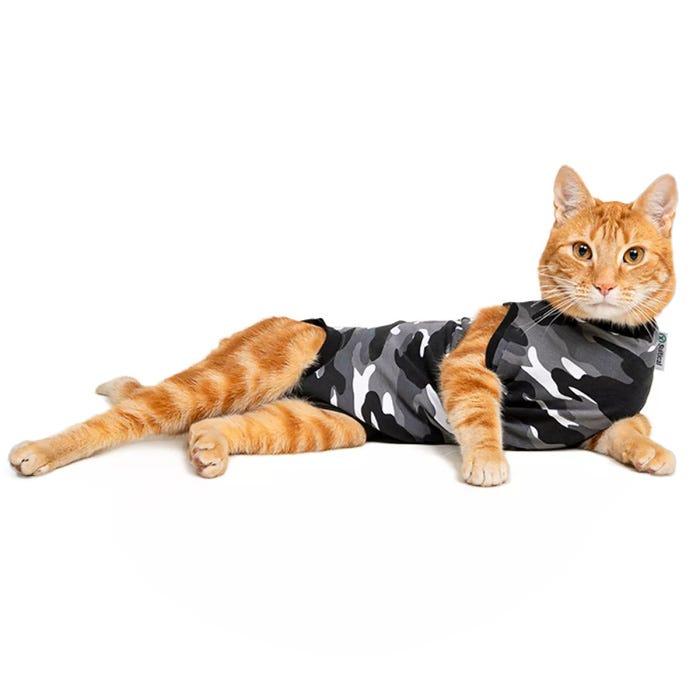Cats, with their curious nature and undeniable charm, often become beloved members of our households. As cat owners, we strive to provide them with an environment that blends safety, comfort, and stimulation. Enter the realm of cat cages—innovative solutions designed to enhance your feline’s lifestyle while ensuring their well-being. In this article, we embark on a journey to explore the concept of “My Cat Cage,” delving into how these spaces can serve both functional and leisure purposes for our whiskered companions. Whether you’re considering a cage for travel, play, or even temporary containment within the home, understanding the various styles and benefits can transform your approach to feline care.
Table of Contents
- Selecting the Perfect Cat Cage for Your Feline Friend
- Ensuring Safety and Comfort in Your Cat Cage Design
- Choosing Materials and Features for Optimal Cat Cage Durability
- Tips for Maintaining a Clean and Hygienic Cat Cage
- Q&A
- To Conclude
Selecting the Perfect Cat Cage for Your Feline Friend
Choosing the right enclosure for your cat requires thoughtful consideration of various aspects to ensure comfort and safety. Size, durability, and ease of cleaning are some of the fundamental factors to ponder. A spacious cage allows your feline friend the freedom to move, stretch, and play, which are essential for their physical and mental well-being. Opt for a cage that not only accommodates the immediate needs of your pet but also allows room for toys, sleeping areas, and even climbing structures.
The materials used in the construction of a cat cage play a vital role in its longevity and safety. Look for cages made from sturdy, non-toxic materials like heavy-duty plastic or powder-coated steel, which are both durable and safe for your feline. These materials resist wear and tear, ensuring that the cage remains stable and secure over time. Additionally, ensure that the cage design includes smooth edges to prevent any injuries.
Ventilation and visibility are equally crucial. A well-ventilated cage keeps your cat comfortable, especially in warmer climates, and a cage with large panels of mesh or bars allows your cat to observe their surroundings. This visibility helps reduce stress by making them feel less isolated from their environment. Ensure the bar spacing is narrow enough to prevent escapades while allowing them to peek out and stay connected with their surroundings.
| Cage Feature | Considerations |
|---|---|
| Size | Ample space for movement |
| Material | Durable and non-toxic |
| Ventilation | Good airflow |
| Visibility | Wide mesh or bars |
Don’t overlook the ease of cleaning, as hygiene is paramount in keeping your cat healthy. A cage that comes with removable trays or panels can be cleaned more efficiently, making maintenance a breeze. Apart from hygiene, consider cages that provide easy access features, such as multiple doors or large openings that allow for quick access to your pet, facilitating tasks like feeding and pet interaction.

Ensuring Safety and Comfort in Your Cat Cage Design
Crafting a haven for your feline companion involves more than just assembling a few mesh panels. To ensure both safety and comfort in your cat cage design, it’s vital to pay attention to several critical elements. First and foremost, consider the layout. A well-thought-out design should feature multiple levels to satisfy your cat’s natural desire for climbing and exploring. Incorporate cozy nooks and elevated perches that not only provide vantage points but also areas for relaxation and play.
Material choice is another crucial aspect. Opt for sturdy, non-toxic materials such as galvanized hardware, which not only resist rust but also withstand the rigors of daily use, providing durability and security for your pets. Safety latches on doors and windows are a must to prevent any Houdini-like escapes. Pay attention to the surface where your cat will rest; adding plush, washable cushions or bedding can significantly enhance comfort and cater to your cat’s love for soft, warm spots to nap.
Enrichment features can transform a simple enclosure into a stimulating environment. Use a combination of hanging toys, scratching posts, and interactive elements to keep your cat engaged. Consider incorporating natural elements, such as logs or climbers, which not only mimic the outdoor environment but also promote physical activity. Ensure that your design doesn’t compromise on space; this gives your cats the freedom to stretch and exercise, reducing stress and promoting well-being.
Adding functional elements such as food and water stations is beneficial for long stays. These can be tucked into corners to maximize play space while ensuring easy access for your pet. Below is an example of how you might organize these essentials within your cat cage design:
| Feature | Location | Materials |
|---|---|---|
| Climbing Platforms | Upper and Corner Areas | Wood and Carpet |
| Napping Zone | Central Area | Plush Bedding |
| Scratching Post | Near Entry | Sisal and Wood |
| Food & Water Station | Accessible Corner | Stainless Steel Bowls |
By thoughtfully considering these aspects, your cat cage design can become not just a functional space but a sanctuary that attends to every nuance of your cat’s needs.

Choosing Materials and Features for Optimal Cat Cage Durability
When selecting materials for a cat cage, durability is paramount. Opt for materials like aluminum or sturdily built meshes, which provide a robust structure while keeping the weight manageable. Aluminum is especially ideal with its combination of durability and lightness, making it practical for both long-term use and ease of transport [[3]]. Additionally, choosing materials that include scratch-resistant mesh can be beneficial, maintaining the cage’s condition against your cat’s natural scratching tendencies.
Another critical aspect is ensuring the cage materials do not compromise comfort. Soft interiors made from padded or plush materials can drastically improve a cat’s experience. For soft-sided carriers, ensure the fabric is durable yet gentle, which can offer comfort during trips while providing necessary ventilation and visibility for the pet [[1]]. Look for designs that balance rigidity and flexibility, providing a secure yet cozy environment for cats.
Consider also the design features of the cage, such as accessibility and ease of cleaning. Zipper-free designs or removable tray bottoms can make managing cleanliness a breeze, contributing significantly to the maintenance of the cage over time. An accessible design doesn’t only assist in upkeep; it also allows for easier handling when moving or adjusting the cage settings to fit different spaces or needs.
Lastly, any material choice should be complemented by safety features such as secure latching mechanisms and non-toxic coatings that prevent corrosion and ensure the cage does not pose hazards to curious cats. Leveraging these elements effectively will extend the longevity of the cage while preserving the safety and comfort of its occupants.

Tips for Maintaining a Clean and Hygienic Cat Cage
Ensuring your cat’s habitat is clean and hygienic is critical for their health and well-being. Begin with regular cleaning routines, which are essential in preventing unpleasant odors and unsanitary conditions. Develop a schedule to change the cage lining at least twice a week. For the best results, use absorbent materials that are easy to dispose of, helping keep moisture and odor under control.
- Daily Spot Cleaning: Remove any visible waste or soiled bedding immediately. This reduces the spread of bacteria and ensures your cat’s comfort.
- Weekly Deep Cleaning: On a weekly basis, take everything out of the cage. Use a pet-safe disinfectant to wipe down all surfaces. Allow them to dry completely before placing your cat back inside.
Choosing the right cleaning products is vital to maintaining a safe environment for your feline friend. Avoid harsh chemicals as they may be harmful to cats. Instead, opt for products specifically designed for pet use, which are both effective and gentle on sensitive noses. Consider natural cleaning solutions like vinegar and baking soda for a chemical-free alternative, but ensure they are thoroughly rinsed off to prevent any residue.
For an added layer of cleanliness, organize your cat’s belongings using containers or small baskets inside the cage. This organization not only makes cleaning more efficient but also helps in keeping track of your pet’s accessories. Remember to wash toys and other cage items weekly, ensuring they are free from germs and allergens.
| Cleaning Task | Frequency | Materials Needed |
|---|---|---|
| Spot Clean | Daily | Pet-safe wipes |
| Change Liners | Twice a Week | Absorbent liners, disposal bag |
| Deep Clean | Weekly | Disinfectant, cleaning cloths |
These practices will not only ensure a healthy and happy kitty but also a pleasant atmosphere in your home. With a clean environment, your cat will thrive, free from the distractions and discomfort of a messy cage.
Q&A
Q: What is the best type of cat cage for my feline friend?
A: Choosing the right cat cage depends on several factors, including the purpose it’s serving. If you need a cage for travel or short-term situations like vet visits, a portable, breathable carrier with good ventilation is ideal. For home use, look for a cage that is spacious and includes shelves or dividers to provide your cat with different levels for climbing and comfort, as this can help reduce stress and mimic a more natural environment [[2]].
Q: Why is my cat digging and scratching the sides of her cage?
A: Cats may dig or scratch the cage sides due to various reasons, including anxiety, boredom, or as an instinctual behavior to mark their territory or prepare for resting. Providing enriching activities outside the cage and ensuring the cage is a comfortable and safe space can help mitigate this behavior. If a cat is kept in a cage more frequently, consider letting them out under supervision to explore and engage [[3]].
Q: Can I make my cat’s cage more comfortable for them?
A: Absolutely! You can enhance your cat’s comfort by adding soft bedding, ideally with materials that mimic their natural preferences. Additionally, including toys and scratching posts within the cage can keep them entertained and prevent boredom. Making sure the cage is in a quiet, safe area of your home will also help your cat feel relaxed and secure [[2]].
Q: How can I reduce my cat’s stress when using a cage?
A: To minimize stress, gradually acclimate your cat to the cage by leaving it open in their living space for exploration. Placing treats and toys inside can create a positive association. During travel, maintain a calm environment by using soothing pheromone sprays and covering the cage with a breathable cloth to reduce visual stressors [[2]].
By understanding your cat’s behaviors and preferences, you can ensure their experience with using a cage, whether at home or during travel, is as positive and stress-free as possible.
To Conclude
investing in the right cat cage can significantly enhance the comfort and safety of your feline friend, whether for travel, home comfort, or managing multiple cats. Understanding your cat’s specific needs and preferences is crucial to making an informed decision. By taking the time to choose the right features and placement, you ensure that your cat’s cage becomes not just a necessity, but a sanctuary. Here’s to creating a safe and cozy environment that both you and your furry companion will appreciate. Thank you for joining us on this insightful journey into the world of cat cages.







0 Comments